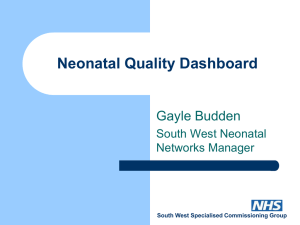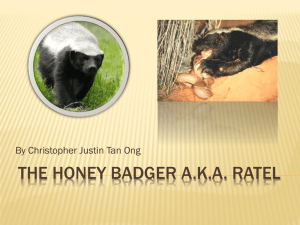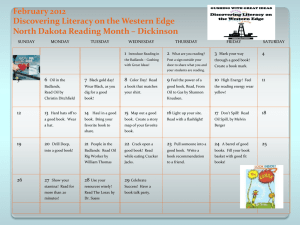Epidemiological effects of badger vaccination
advertisement
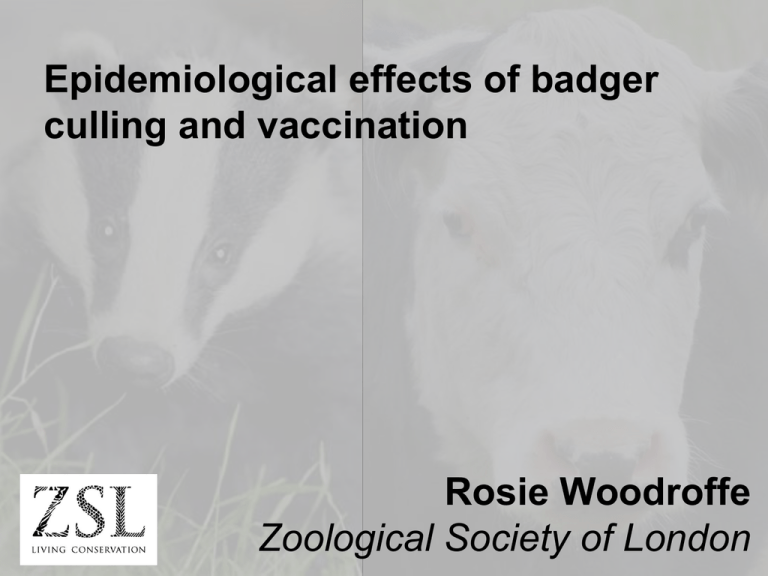
Epidemiological effects of badger culling and vaccination Rosie Woodroffe Zoological Society of London Two important facts about bovine TB TB is a huge problem for both beef and dairy farmers Badgers are part of the problem Epidemiological effects of badger vaccination and culling Introduction to disease dynamics Nonselective badger culling Badger vaccination Combined badger culling & vaccination Epidemiological effects of badger vaccination and culling Introduction to disease dynamics Nonselective badger culling Badger vaccination Combined badger culling & vaccination Susceptible and infectious hosts susceptible susceptible infectious Immunity immune Population structure is important 1981 0 1km 1981 1982 0 1km 1983 1984 1985 Culling Fewer infected hosts Fewer susceptible hosts Less frequent contact between infected and susceptible hosts What nonselective badger culling is meant to do CULL • • • Reduce numbers of infected animals Reduce onward transmission of infection to other badgers Reduce onward transmission to cattle Badger densities were reduced inside RBCT culling areas; but their territorial and ranging behaviour were also affected Triplet D proactive prevalence (relative to first proactive) RBCT culling led to a rapid drop in badger numbers… but numbers of infected badgers fell more slowly error bars show 95% CI As culls were repeated, the proportion of infected badgers increased What badger culling actually does CULL • • • • Disrupts territorial system Increases opportunities for contact between social groups Increases opportunities for disease transmission Increases number of cattle herds contacted by each badger Badger culling has two opposing consequences Fewer badgers - good Each remaining badger more infectious – bad relative change in cattle TB incidence How does changing badger density influence TB risk to cattle? reactive culling more cattle TB outside proactive West Somerset % reduction in badger density 20% 40% 60% 80% 100% West Gloucestershire proactive culling less cattle TB Approach Nonselective cull - large scale Nonselective cull - small scale Badger numbers much reduced Badger TB Cattle TB increased £1,800less & more £4,000 somewhat reduced increased more Annual cost/km2 – Vaccination Vaccination Removes susceptibles by making them immune No impact on those already infected Nevertheless, helped eradicate smallpox and rinderpest, and to control many other diseases e.g. measles, rabies, human TB What badger vaccination is meant to do vaccinate • • No effect on already-infected animals Reduce onward transmission of infection What vaccination is meant to do vaccinate • • No effect on already-infected animals Reduce onward transmission of infection What vaccination is meant to do vaccinate • • • No effect on already-infected animals Reduce onward transmission of infection Lowers prevalence over time as infected animals die off What vaccination is meant to do vaccinate • • • • No effect on already-infected animals Reduce onward transmission of infection Lowers prevalence over time as infected animals die off Population structure likely to enhance vaccine benefits Approach Badger numbers Badger TB Cattle TB Annual cost/km2 Nonselective cull - large scale much reduced increased less & more £1,800£4,000 Nonselective cull - small scale somewhat reduced increased more – Vaccination unchanged (less) £1,500£4,000 reduced Selective culling Catch and test 60-80% of badgers Detect and cull 49% of infected badgers Vaccinate test-negative badgers CSL (now AHVLA) 2009: “if... [selective] culling produced no social perturbation then the reduction in the number of infected badgers, and the reduction in herd breakdowns, was greater than either culling or vaccination... If... culling resulted in repeated perturbation of social groups each time a badger social group... had an animal culled, then there was a dramatic increase in the number of infected badgers and the number of herd breakdowns” Bielby et al (in prep) – effects of 1986-98 small-scale culls on badger populations in 1998-2002 Estimates of the threshold numbers of badgers culled needed to prompt increase in territory size Approach Nonselective cull - large scale Badger numbers much reduced Badger TB Cattle TB Annual cost/km2 increased £1,800less & more £4,000 Nonselective cull - small scale somewhat reduced increased more – Vaccination unchanged (less) £1,500£4,000 Selective cull somewhat reduced (increased) (increased) >£2,880 reduced Conclusions Nonselective culling, vaccination, and selective culling function by different mechanisms but in principal all have the potential to control wildlife disease Population structure can have a major impact on disease transmission rates Culling alters badger population structure in ways which accelerate transmission, undermining benefits for TB control By contrast, badger population structure is likely to enhance the efficacy of vaccination Badger vaccination is likely to be cheaper than culling, and is unlikely to cause harm; however its contribution to cattle TB control is not yet known
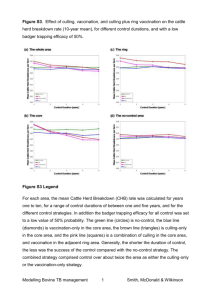
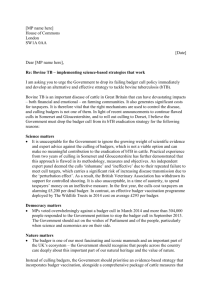
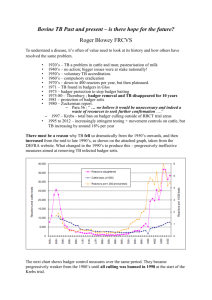

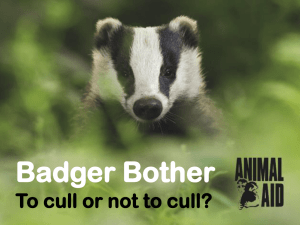
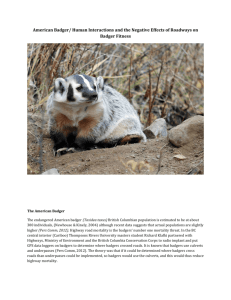
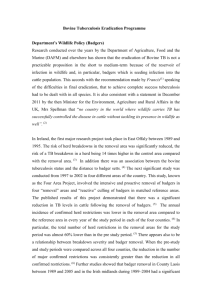
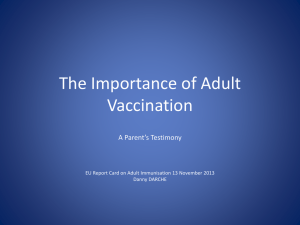
![[2015 Oct doc] AN OPEN LETTER TO NETWORK FOR ANIMALS](http://s3.studylib.net/store/data/006651641_1-2fc6a0bda68044dec1dde2f440667d74-300x300.png)
